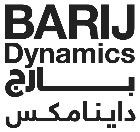Industrial Vehicles Market in Terms of Vehicle Type, Drive Type, Application, Capacity, Level of Autonomy, Aerial Work Platform and Region - Global Forecast to 2027 - ResearchAndMarkets.com
The "Global Industrial Vehicles Market in terms of Vehicle Type, Drive Type (ICE, Battery-operated, Gas-powered), Application, Capacity, Level of Autonomy, Aerial Work Platform (Boom Lifts, Scissor Lifts) and Region - Forecast to 2027" report has been added to ResearchAndMarkets.com's offering.
The global industrial vehicles market is projected to grow from USD 43.7 billion in 2022 to USD 54.3 billion by 2027, at a CAGR of 4.5%.
Manufacturing segment is expected to grow at a significant rate during the forecast period, by application
The manufacturing segment of the industrial vehicles market is projected to grow at the noticeable rate during the forecast period. The increasing adoption of industrial vehicles in automotive, chemical, food & beverages, and healthcare, among others, is expected to drive the manufacturing segment of the market during the forecast period.
These vehicles are used in manufacturing processes to store and retrieve inventory for the production line. Benefits such as short downtime, labor cost savings, reduced accidents on the production floor, and increased efficiency and flexibility have been encouraging manufacturers to invest in new product development. These benefits will drive the demand for industrial vehicles during the forecast period.
North America is expected to be the significant market during the forecast period
North America is a hub for various renowned industrial vehicle manufacturers known for delivering quality and high-performance industrial vehicles. Factors such as large e-commerce industry and an established ecosystem for industrial as well as manufacturing companies with their own warehousing capabilities make North America an attractive market for industrial vehicle manufacturers. Moreover, an extensive 3PL network has led to the growth of the warehousing sector in North America. Exhibitions and trade shows such as ProMat and MODEX, which are held annually, also help material handling equipment manufacturers to look for prospective customers in North America.
The North American automotive industry is one of the most advanced in the world; it houses major OEMs such as Ford Motors, Tesla, General Motors, and Fiat-Chrysler. The North American Free Trade Agreement (NAFTA) has fostered the growth of the automotive industry in the region. The US, which has traditionally been a global technological leader, is the largest automotive market in North America.
A large customer base and high disposable income levels in the country have fueled the demand for electric vehicles, resulting in increased manufacturing activities by local automotive OEMs. This, in turn, requires material handling solutions to transport chassis, car bodies, engines, and other components in the automotive manufacturing units in North America. Industrial vehicles are important for handling eccentric-shaped loads, and hence their adoption in this region is growing.
Freight & Logistics segment is estimated to be the second largest market in the industrial vehicles market during the forecast period
Freight & Logistics is expected to be the second largest segment by application during the forecast period. Logistics and freight operations include material handling processes on ports, logistics hubs, and large distribution centers. With the rising intricacy of logistics operations and freight processes, the issue of waiting time and in-travel goods damage is gaining traction in the intralogistics industry. End use industries that have multinational production operations like automotive and electronics have been trying to reduce the loss and damages during logistics processes.
Logistics and freight operations include material handling processes on ports, logistics hubs, and large distribution centers. With the rising intricacy of logistics operations and freight processes, the issue of waiting time and in-travel goods damage is gaining traction in the intralogistics industry. End use industries that have multinational production operations like automotive and electronics have been trying to reduce the loss and damages during logistics processes.
Market Dynamics
Drivers
- Growing E-Commerce and Warehousing
- Technological Advancements Aimed at Increasing Productivity
- Increasing Demand for Automation Solutions in Material Handling Across Industries
- Rising Focus on Improving Workplace Safety
Restraints
- High Cost of Automation
- Lack of R&D Facilities and High Maintenance of Industrial Vehicles
Opportunities
- Increasing Demand for Battery-Operated Industrial Vehicles
- Advent of Smart Factories in Material Handling Industry
Challenges
- Government Regulations and Safety Concerns
- Low Labor Costs Restrict Adoption of Industrial Vehicles in Emerging Economies
Companies Mentioned
- Action Construction Equipment Ltd.
- Aichi Corporation
- Altec Industries
- Anhui Heli Co. Ltd.
- Bronto Skylift
- Cargotec Corporation
- Clark
- Combilift
- Crown Equipment Corporation
- Daifuku
- Doosan Industrial Vehicle
- Genkinger GmbH
- Godrej & Boyce
- Hangcha Group Co., Ltd.
- Haulotte Group
- Hubtex Maschinenbau & Co. Kg
- Hyster-Yale Materials Handling, Inc.
- Hyundai Construction Equipment India Pvt. Ltd.
- Imer International Spa
- J C Bamford Excavators Ltd.
- JBT
- Jlg Industries, Inc.
- Jungheinrich Ag
- Kion Group Ag
- Komatsu
- Konecranes
- Linamar Corporation
- Lonking Machinery Co., Ltd.
- Manitou Group
- Mitsubishi Logisnext Co., Ltd.
- Noblelift Intelligent Equipment Co, Ltd.
- Omg Srl.
- Paletrans Forklifts
- Palfinger Ag
- Sinoboom Intelligent Equipment Co, Ltd.
- Snorkel
- Stocklin Logistik Ag
- Svetuck Ab
- Tadano Ltd.
- Terex Corporation
- Toyota Industries Corporation
- V. Mariotti Srl
For more information about this report visit https://www.researchandmarkets.com/r/89v9rc
View source version on businesswire.com: https://www.businesswire.com/news/home/20220613005550/en/




